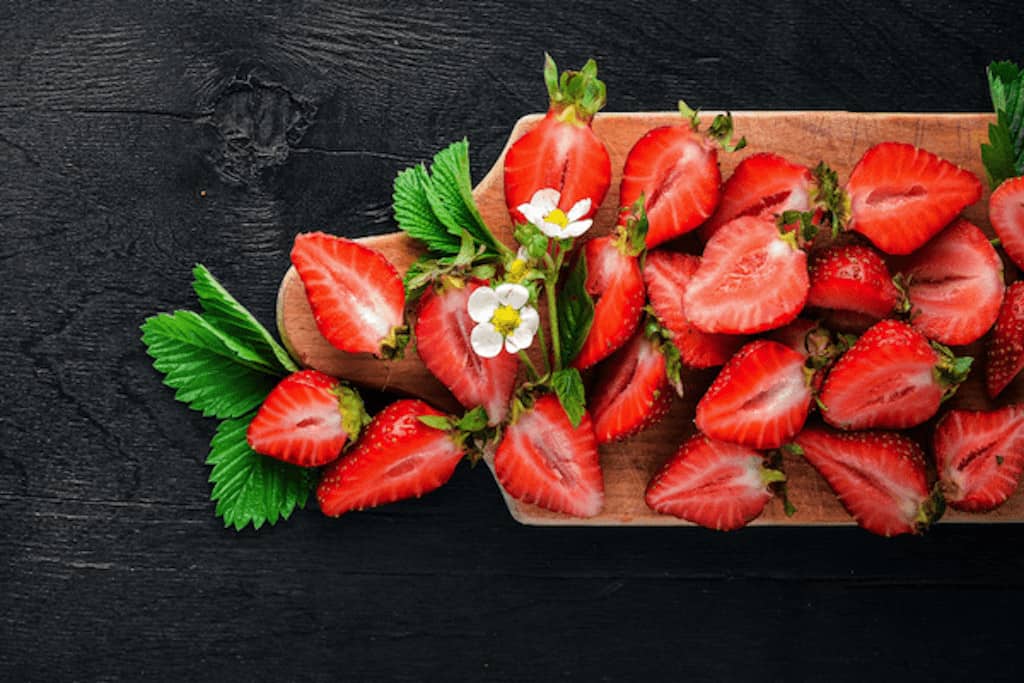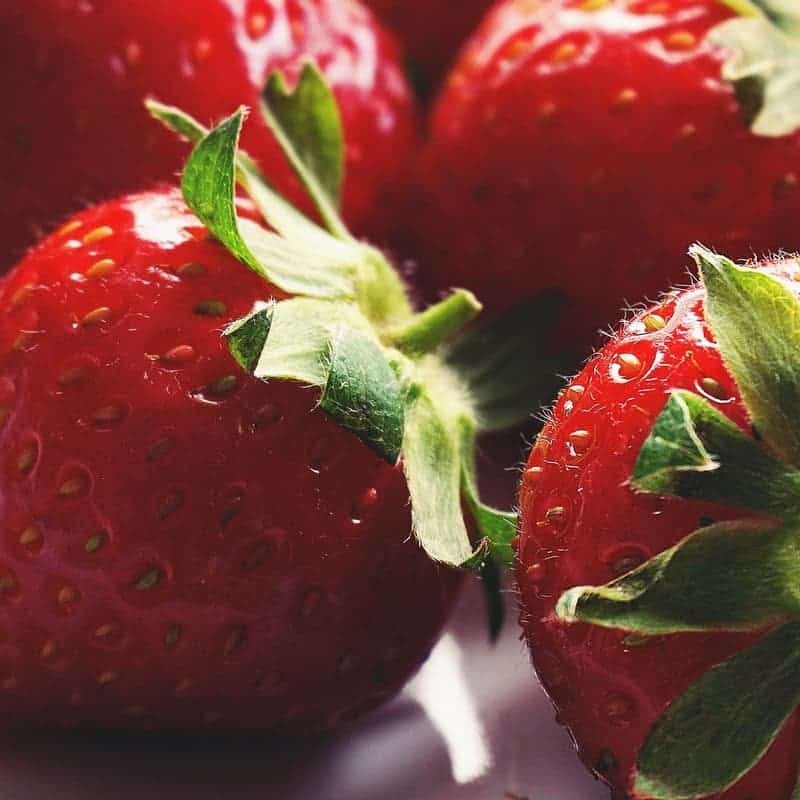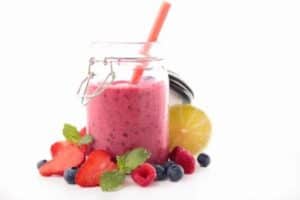Are Freeze Dried Strawberries Healthy?
When it comes to eating more fruit to our diet, there is conflicting information about how healthy fruit really is. Most experts agree that fruits are an integral part of a well-balanced diet; however, others suggest “nature’s candy” is not as healthy as we may believe because of its high sugar content.
As if choosing the most nutritious fruits wasn’t confusing enough, there is now an extensive variety of fruit products available on the market– including traditional dried fruits and the increasingly popular freeze-dried fruits.
What Are Freeze-Dried Fruits?
Freeze-dried fruits are made using a process in which frozen fruits are placed in a vacuum under very low pressures. Low pressure causes the frozen water in fruits to evaporate directly from ice to vapor. This process, also known as sublimation, removes water much more efficiently than regular drying. In fact, freeze-drying typically reduces the fruit’s water content by about 99%.
Because freeze-dried fruit has been dehydrated thoroughly, it has a crunchier texture than traditional dried fruit. This makes freeze-dried fruit a delicious addition for oatmeals, trail mix bags, and acai bowls. Because of its crunchy texture and sweet taste, freeze-dried fruit can also be enjoyed by itself as a snack.
Freeze-dried foods have been around for a while, though they recently have experienced a rise in popularity thanks to growing awareness about their versatility and potential benefits.
Freeze-Dried Strawberries
It’s no surprise that strawberries are one of the most popular freeze-dried fruits among consumers. Their sweet, familiar taste is a welcome addition to most breakfast foods and midday snacks. Additionally, crunchy, freeze-dried strawberries can make soft foods like yogurts and oatmeals a bit more fun and enjoyable for both children and adults.
How Does Freeze-Drying Affect Fruit?
While freeze-drying removes most of the fruit’s water content, the fruit’s shape, color, and overall structure are typically maintained. Freeze-dried fruits like strawberries are also able to retain their natural flavor, so no artificial additives or sugars need to be used.
Because freeze-dried fruit is entirely stripped of its water content, it usually has a higher concretion of nutrients and sugars. This has led many to believe that freeze-dried and dried fruit have more sugars than fresh fruit, but that is simply not true. The actual difference is in the concentration of sugar, not the amount.

Are Freeze-Dried Fruits Nutritious?
In addition to their natural flavor and crunchy texture, freeze-dried fruits offer several health benefits thanks to their nutrient content. Adding freeze-dried fruits to your daily diet can help boost your immune system, prevent digestive problems, and regulate your blood pressure.
Nutrients
Freeze-dried fruit has about the same amount of nutrients as fresh fruit. For example, both freeze-dried and fresh strawberries are rich in Vitamin A and Vitamin C. In many cases, some nutrients may be lost during the freeze-drying process, but generally speaking, you will still benefit from all nutrients found naturally in fruits. Common nutrients found in fruits like Vitamin C, iron, and potassium promote a healthy immune system and help regulate blood pressure.
Sugar
Freeze-dried fruit may contain higher concentrations of sugar, but that doesn’t mean you should eliminate freeze-dried foods from your diet. As opposed to regular dried fruit, freeze-dried fruit is not made with added sugars, as it often maintains its natural sweetness after processing.
Low in Calories
Many fruits, including strawberries, are naturally low in calories. If you are watching your weight, low-calorie freeze-dried fruits can help you satisfy your sweet tooth without making you feel guilty about it. Some brands of freeze-dried fruit may contain fewer calories than others, so it’s important to read the label of each package before purchase.
Rich in Fiber
One of the most important reasons fruits and vegetables are integral to a well-balanced diet is because of their high fiber content. Freeze-dried fruit is similar in fiber content to fresh or dried fruit, making it a good option to increase your fiber intake. Fiber promotes balanced, regular digestion and helps keep cholesterol levels low. Healthy fiber intake may also lower your risk of heart disease and colon cancer.
Antioxidant Properties
Antioxidants are compounds that fight free radicals which are substances known to cause damage to cells throughout the body. Eating freeze-dried fruits rich in antioxidants can help your system fight illnesses such as heart disease and cancer.
Freeze-Dried Fruit vs. Fresh Fruit
When it comes to nutrition, freeze-dried and fresh fruit are not very different. Both freeze-dried and fresh fruit are healthy components of any diet, so choosing between the two will often come down to personal preference and needs.
Taste
While nothing beat the taste of fresh fruit, freeze-dried fruit is still able to hold its own in this area. Despite all the processing that freeze-dried fruits go through, fruits like freeze-dried strawberries and blueberries maintain most of their flavor. The main difference between the two when it comes to taste is their texture. Fresh fruit is soft and chewy, while freeze-dried fruit is hard and crunchy.
Shelf-Life
Perhaps the most significant advantage freeze-dried fruit has over fresh fruit is its shelf life. Freeze-dried foods can technically live in your pantry for years, unlike most fresh fruit which goes bad in a matter of days. If you are looking to save space in your fridge, replacing frozen or fresh fruits for freeze-dried fruits may be a good idea.
On-the-Go
Both fresh fruit and freeze-dried fruit are great snack options if you are always on the go. They are delicious, nutritious, and easy-to-carry with most fruits capable of fitting in most bags. However, because freeze-dried fruits have technically no water weight, they are generally the more portable, lightweight option. Freeze-dried foods are preferred by hikers and astronauts who need to limit the total amount of weight they carry.

How to Freeze-Dry Fruit
Most supermarkets now offer a large variety of freeze-dried foods such as strawberries, bananas, and blueberries. If your local supermarket does not carry freeze-dried fruit or the specific freeze-dried fruit you want, you’ll be glad to hear you can make your own freeze-dried fruit at home. All you need for DIY freeze-drying is dry ice, a 5-gallon cooler, Ziploc bags, and your favorite fruit.
Here’s how to freeze-dry strawberries at home in 7 easy steps:
- Wash your strawberries in cool water and dry them thoroughly in a clean kitchen towel.
- Remove the stems and slice the strawberries thinly.
- Place the slices in a Ziploc bag and press the air out of the bag.
- Put a dense layer of dry ice on the bottom of your cooler and place the bags with the fruit on top of the dry ice.
- Close the lid on the cooler, but not tightly. Allow for some air to escape while ice evaporates.
- Seal the lid completely once all the ice has evaporated.
- You can keep the fruit in the cooler or store the bags in a cool, dry place.
DIY Freeze Dryer
If you are really passionate about freeze-drying but doing it at home isn’t for you, check out one of the many freeze-dryers available online. A freeze-dryer is a device that freezes your food and then extracts all the moisture out of it without requiring too much effort on your part. Freeze-dryers are on the pricey side, so make sure you do as much research as you can before making a purchase.





